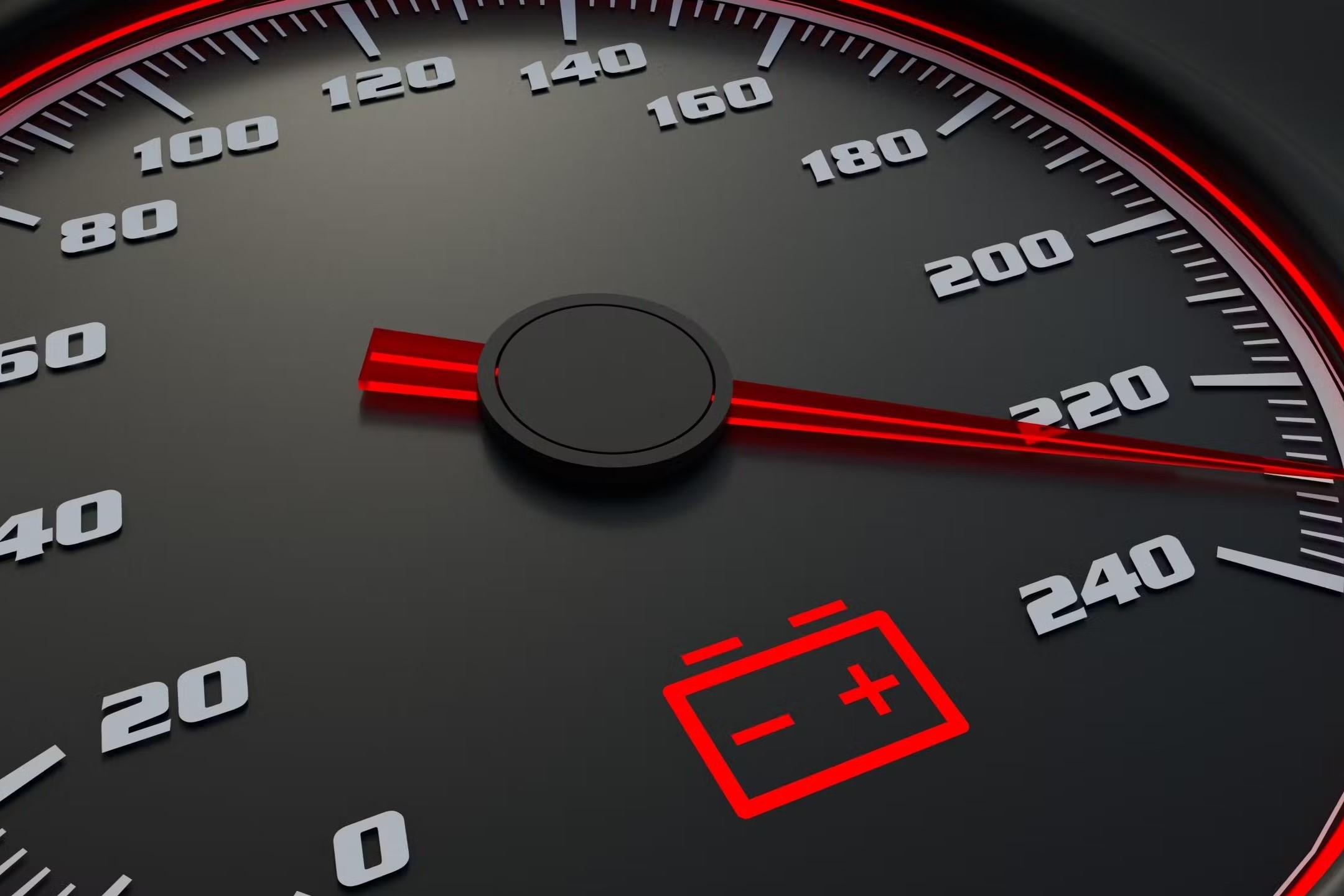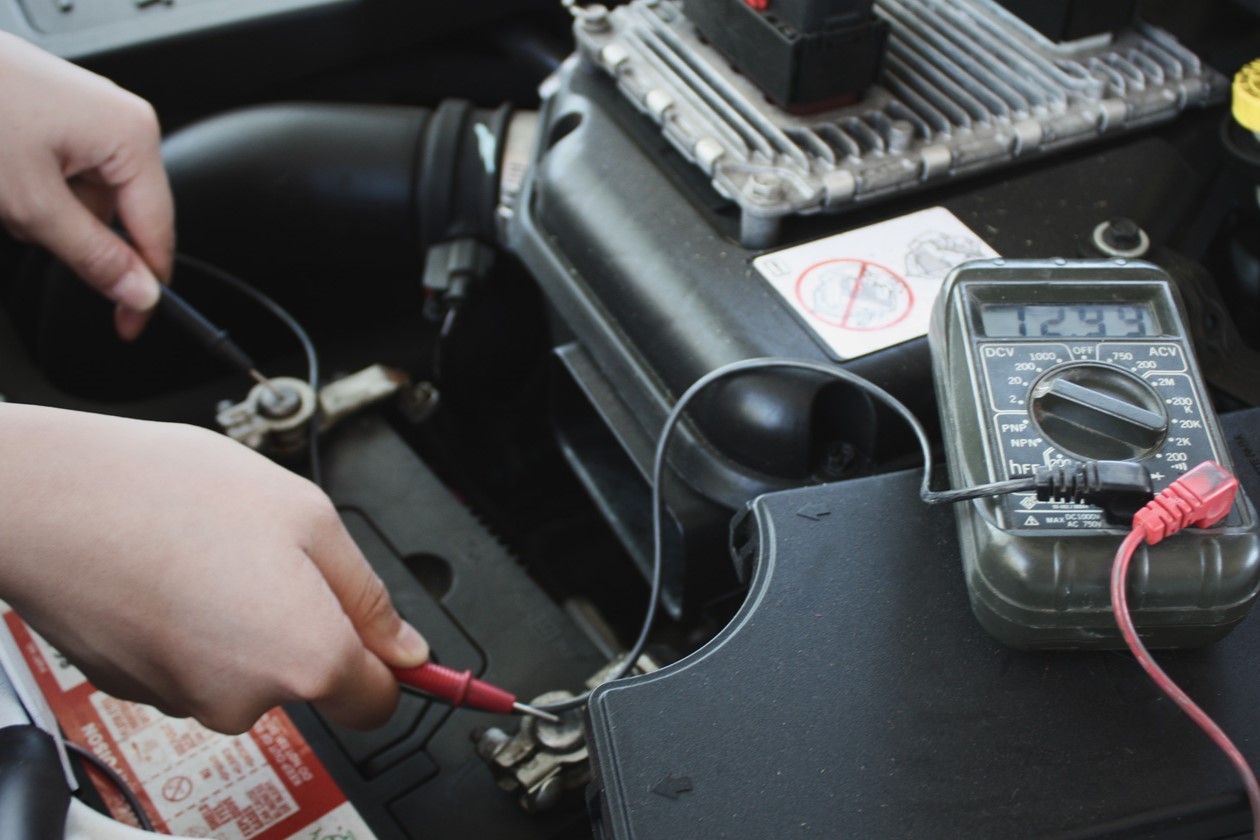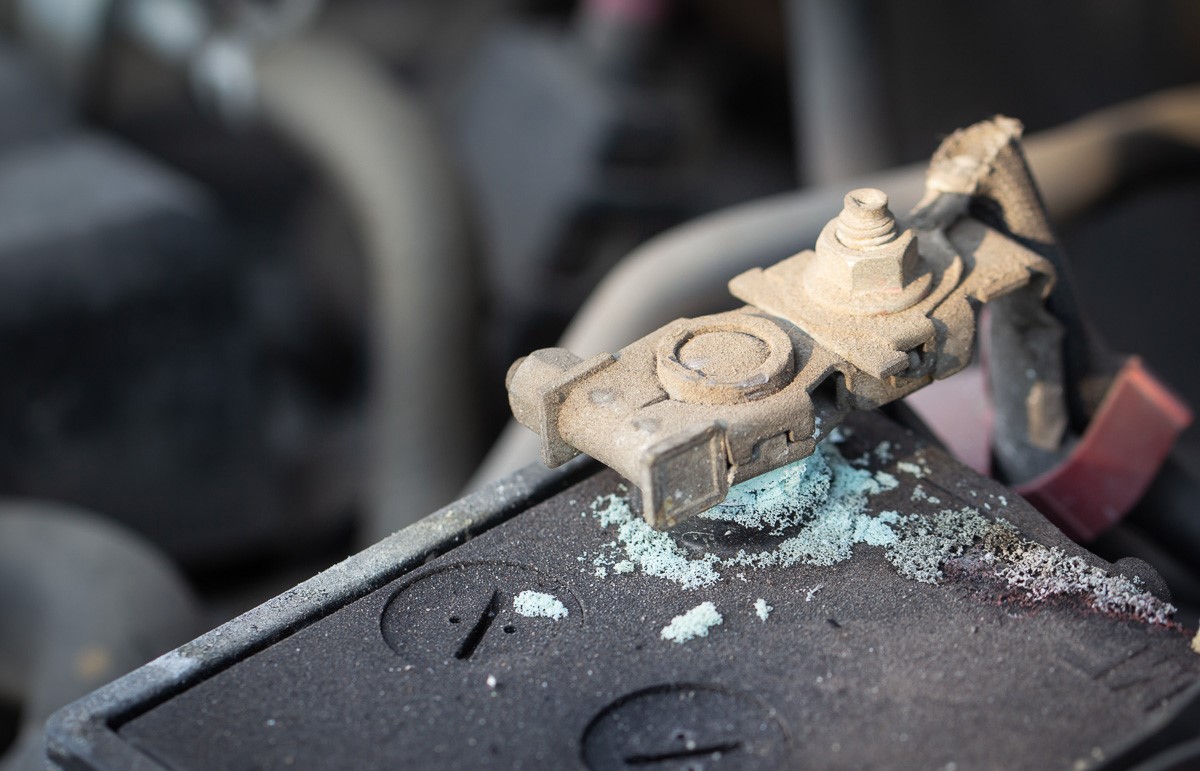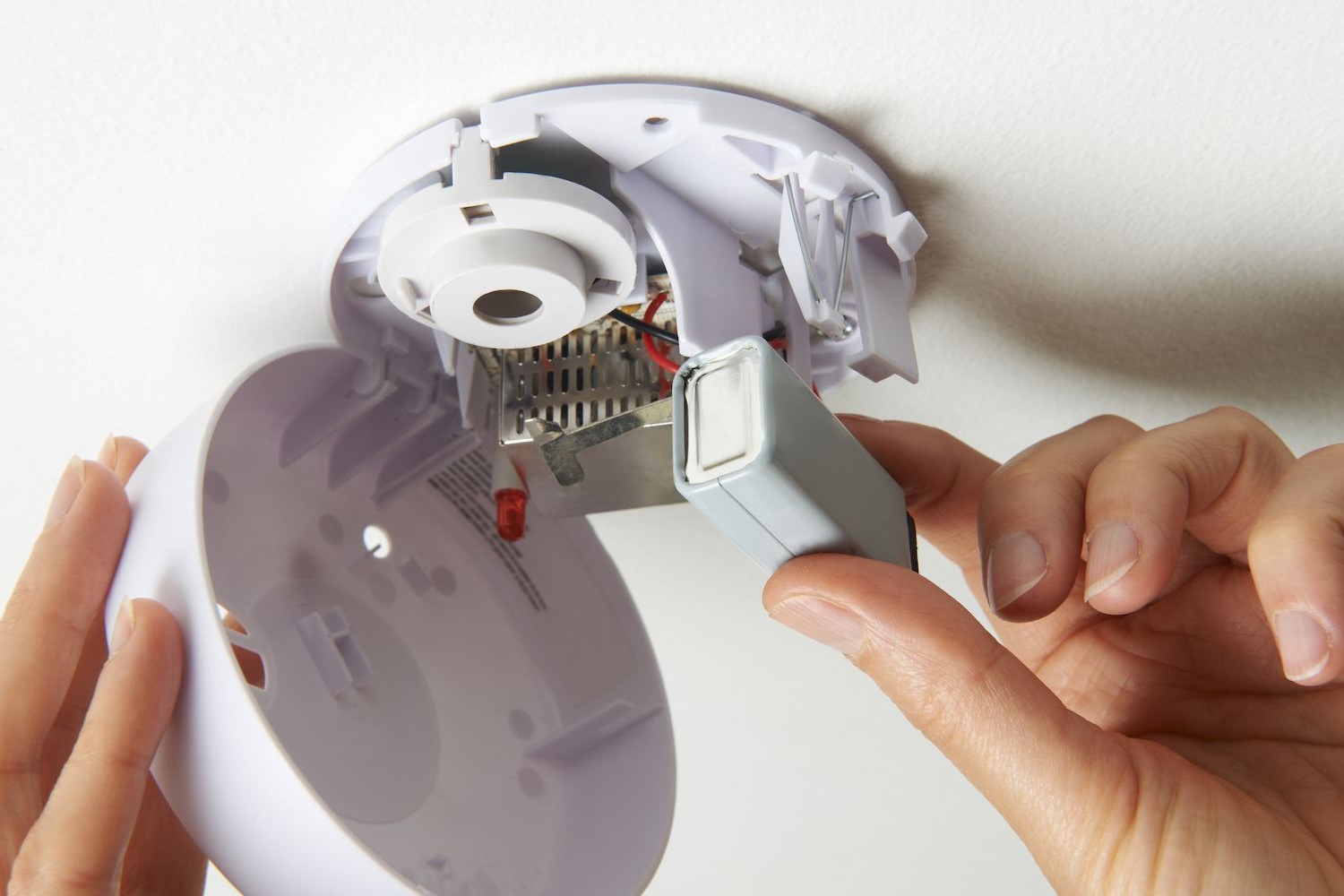Home>Automotive>The Surprising Reason Your Battery Light Keeps Coming On


Automotive
The Surprising Reason Your Battery Light Keeps Coming On
Published: January 9, 2024
Discover the surprising reason behind your automotive battery light coming on and learn how to resolve the issue quickly and effectively. Don't let a flickering battery light disrupt your driving experience!
(Many of the links in this article redirect to a specific reviewed product. Your purchase of these products through affiliate links helps to generate commission for Noodls.com, at no extra cost. Learn more)
Table of Contents
Introduction
When you're cruising down the road, the last thing you want to see is the dreaded battery light flickering on your dashboard. It's a signal that something isn't quite right under the hood, and it can trigger a wave of uncertainty and concern. Whether you're a seasoned driver or a novice behind the wheel, the appearance of the battery light can be a cause for alarm.
In this comprehensive guide, we'll delve into the perplexing world of the battery light and explore the myriad of reasons why it might illuminate at the most inconvenient times. From a simple glitch to a more complex issue, we'll unravel the mystery behind this seemingly innocuous yet crucial dashboard indicator.
So, buckle up and get ready to gain a deeper understanding of why your battery light keeps coming on. By the time we're done, you'll be armed with the knowledge to tackle this issue head-on and ensure that your journeys are not marred by unexpected mechanical hiccups.
Understanding the Battery Light
The battery light, often shaped like a rectangular box with a positive and negative sign inside, is a vital dashboard indicator that demands attention when it flickers to life. Contrary to its name, this light does not exclusively signal issues with the battery itself. Instead, it serves as a messenger for the broader electrical system of the vehicle.
When the ignition is turned on, the battery light typically illuminates briefly, indicating that the electrical system is functioning. Once the engine starts, the light should promptly extinguish, signaling that the alternator is generating sufficient power to both charge the battery and supply electricity to the vehicle's various components.
However, if the battery light persists or reappears while driving, it signifies an anomaly within the electrical system. This could stem from a range of potential issues, including a weakening battery, a malfunctioning alternator, a loose or damaged drive belt, or faulty wiring. In some cases, the light might also indicate problems with the voltage regulator or other related components.
Understanding the nuances of the battery light is crucial for every driver. It serves as an early warning system, alerting you to potential electrical malfunctions that, if left unaddressed, could lead to a complete breakdown. Ignoring the battery light can result in a domino effect of complications, ultimately leaving you stranded on the side of the road.
As such, being attuned to the significance of the battery light and its implications empowers you to take proactive measures to maintain the health and functionality of your vehicle's electrical system. By staying vigilant and promptly addressing any issues indicated by the battery light, you can ensure the smooth operation of your vehicle and minimize the risk of unexpected breakdowns.
In the following sections, we'll explore the common reasons behind the battery light coming on, uncovering the underlying factors that can trigger its illumination and providing insights into addressing these issues effectively. So, fasten your seatbelt as we delve deeper into the intricacies of this essential dashboard indicator.
Common Reasons for the Battery Light Coming On
-
Faulty Alternator: A malfunctioning alternator is one of the primary culprits behind the persistent glow of the battery light. The alternator is responsible for generating electricity to power the vehicle's electrical system and charge the battery while the engine is running. When the alternator fails to perform optimally, it can lead to insufficient power supply, causing the battery light to illuminate.
-
Degraded Battery: As the heart of the vehicle's electrical system, the battery plays a pivotal role in providing the initial power to start the engine. Over time, batteries naturally degrade, resulting in reduced capacity and efficiency. When the battery struggles to hold a charge or experiences internal faults, it can trigger the battery light to signal potential issues.
-
Damaged Drive Belt: The drive belt, also known as the serpentine belt, connects the engine's crankshaft to the alternator, power steering pump, and other vital components. If the drive belt becomes worn, frayed, or slips out of place, it can impede the proper functioning of the alternator, leading to erratic power supply and the illumination of the battery light.
-
Faulty Wiring or Connections: The intricate network of wiring and electrical connections within the vehicle is susceptible to wear, corrosion, and damage over time. When the integrity of these components is compromised, it can disrupt the flow of electricity, resulting in erratic behavior of the electrical system and prompting the battery light to come on.
-
Voltage Regulator Issues: The voltage regulator is a critical component that regulates the output of the alternator, ensuring a consistent and stable supply of electricity to the vehicle's systems. If the voltage regulator malfunctions or fails, it can lead to erratic charging of the battery and trigger the battery light to illuminate as a warning sign.
-
Loose or Corroded Battery Terminals: The connection points between the battery terminals and the vehicle's electrical system must remain secure and free from corrosion. Loose or corroded terminals can impede the flow of electricity, leading to voltage fluctuations and prompting the battery light to come on as a precautionary measure.
Understanding these common reasons for the battery light coming on empowers drivers to recognize potential issues within the vehicle's electrical system. By promptly addressing these underlying factors, drivers can mitigate the risk of unexpected electrical malfunctions and ensure the smooth operation of their vehicles.
The Surprising Reason for the Battery Light Coming On
Amidst the array of common causes behind the persistent glow of the battery light, there exists a surprising yet often overlooked reason that can trigger this vital dashboard indicator: the presence of excessive electrical resistance within the vehicle's charging system.
Electrical resistance, a fundamental concept in the realm of automotive electronics, refers to the opposition encountered by the flow of electric current through a conductor. While a certain level of resistance is inherent in any electrical circuit, an excessive amount can disrupt the optimal functioning of the charging system, leading to the illumination of the battery light.
One of the primary sources of heightened electrical resistance stems from the accumulation of corrosion and grime on the terminals and connectors within the charging system. Over time, these crucial contact points can become coated with a layer of insulating residue, hindering the efficient flow of electricity and causing voltage fluctuations. As a result, the vehicle's electrical system may struggle to maintain a consistent power supply, prompting the battery light to signal potential issues.
Moreover, the presence of high resistance can also manifest in the form of deteriorated wiring and connections within the charging system. Exposure to harsh environmental conditions, prolonged heat, and mechanical stress can degrade the integrity of the wiring, leading to increased resistance and compromised electrical conductivity. This, in turn, can disrupt the harmonious operation of the alternator, battery, and associated components, culminating in the illumination of the battery light.
The surprising aspect of this particular reason lies in its subtle nature. Unlike a malfunctioning alternator or a visibly degraded battery, the effects of excessive electrical resistance may not be immediately apparent. Drivers may overlook the gradual buildup of resistance within the charging system until the battery light serves as a wake-up call, prompting them to investigate the underlying cause.
Addressing this surprising reason for the battery light coming on entails proactive measures to mitigate electrical resistance within the vehicle's charging system. Regular inspection and maintenance of the terminals, connectors, and wiring can prevent the accumulation of corrosive deposits and ensure optimal electrical conductivity. Additionally, utilizing dielectric grease on the terminals can inhibit corrosion and enhance the longevity of the electrical connections, thereby reducing the risk of heightened resistance.
By shedding light on this often underestimated factor, drivers can take preemptive steps to safeguard the integrity of their vehicle's charging system, minimizing the likelihood of the battery light making an unwelcome appearance. Understanding the role of electrical resistance in triggering the battery light's illumination empowers drivers to maintain a vigilant stance towards the health and functionality of their vehicle's electrical components, ensuring a smoother and more reliable driving experience.
How to Address the Issue
Addressing the issue of the battery light coming on requires a systematic approach aimed at identifying and resolving the underlying causes. By implementing the following steps, drivers can effectively tackle this concern and restore the optimal functionality of their vehicle's electrical system.
1. Professional Diagnosis
Upon the illumination of the battery light, seeking professional diagnosis from a qualified automotive technician is paramount. A comprehensive diagnostic scan using specialized equipment can pinpoint the specific issues within the charging system, including potential faults in the alternator, battery, voltage regulator, and associated components. This step serves as the foundation for formulating an accurate and targeted remedial plan.
2. Alternator Inspection
Given the pivotal role of the alternator in generating electricity and charging the battery, a thorough inspection of this component is imperative. The technician will assess the alternator's output, voltage regulation, and overall performance to determine if it is functioning within optimal parameters. If any irregularities or malfunctions are detected, the alternator may require repair or replacement to rectify the underlying cause of the battery light illumination.
3. Battery Evaluation
Evaluating the condition and capacity of the battery is essential in addressing the battery light issue. The technician will conduct a battery load test to assess its ability to hold a charge and deliver consistent voltage. If the battery exhibits signs of degradation or internal faults, such as low voltage output or insufficient capacity, replacing the battery may be necessary to restore the stability of the electrical system.
4. Charging System Inspection
A comprehensive inspection of the vehicle's charging system, including the drive belt, wiring, terminals, and connections, is crucial in identifying potential sources of electrical resistance and voltage fluctuations. Any signs of corrosion, grime buildup, or damaged wiring will be addressed to ensure optimal electrical conductivity and minimize the risk of resistance-related issues triggering the battery light.
5. Voltage Regulator Assessment
The voltage regulator, responsible for maintaining a consistent output from the alternator, will be assessed for proper functioning. If the voltage regulator exhibits irregularities or fails to regulate the charging voltage effectively, it may necessitate repair or replacement to restore the stability of the electrical system and prevent the recurrence of the battery light illumination.
6. Preventive Maintenance
In addition to addressing the immediate concerns related to the battery light, implementing a regimen of preventive maintenance is essential for mitigating future electrical malfunctions. Regular inspection and cleaning of the terminals, connectors, and wiring, coupled with the application of dielectric grease to inhibit corrosion, can minimize the risk of excessive electrical resistance and ensure the long-term health of the charging system.
By following these proactive steps and entrusting the diagnosis and remediation to qualified professionals, drivers can effectively address the issue of the battery light coming on and safeguard the reliability of their vehicle's electrical system. Taking a proactive stance towards the maintenance and care of the charging system is instrumental in preventing unexpected breakdowns and ensuring a smoother and more secure driving experience.
Conclusion
In the realm of automotive diagnostics, the battery light serves as a steadfast sentinel, alerting drivers to potential irregularities within the vehicle's electrical system. Through our exploration of the common reasons for the battery light coming on, as well as the surprising factor of electrical resistance, it is evident that this seemingly innocuous dashboard indicator holds profound implications for the overall functionality and reliability of the vehicle.
Understanding the multifaceted nature of the battery light empowers drivers to approach its illumination with vigilance and proactive measures. From the fundamental roles of the alternator and battery to the intricate network of wiring, terminals, and connections, every component within the charging system plays a pivotal part in ensuring the consistent and reliable supply of electricity to the vehicle's various systems.
The surprising revelation of excessive electrical resistance as a potential trigger for the battery light underscores the intricate interplay of factors that can influence the functionality of the vehicle's electrical system. By acknowledging this often overlooked aspect, drivers can adopt preventive measures to mitigate the risk of resistance-related issues and maintain the optimal conductivity of the charging system.
As we navigate the complexities of modern vehicles, the significance of professional diagnosis and targeted remediation cannot be overstated. Seeking the expertise of qualified automotive technicians is essential in accurately identifying and addressing the underlying causes of the battery light illumination. Through meticulous inspection, diagnosis, and maintenance, drivers can ensure the long-term health and reliability of their vehicle's electrical system, minimizing the likelihood of unexpected breakdowns and disruptions.
In conclusion, the battery light serves as a steadfast reminder of the intricate symbiosis between the vehicle's electrical components. By heeding its illumination and taking proactive steps to address potential issues, drivers can fortify the resilience and functionality of their vehicles, ensuring a smoother and more secure driving experience. Embracing a proactive stance towards the maintenance and care of the charging system is instrumental in safeguarding against unexpected electrical malfunctions, ultimately enhancing the overall safety and reliability of every journey.













